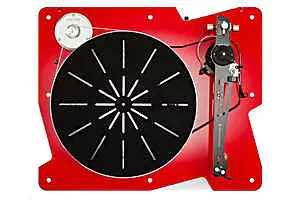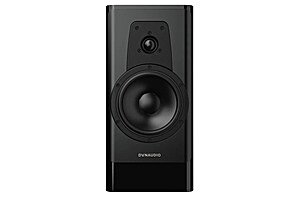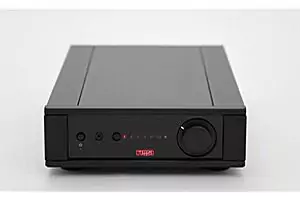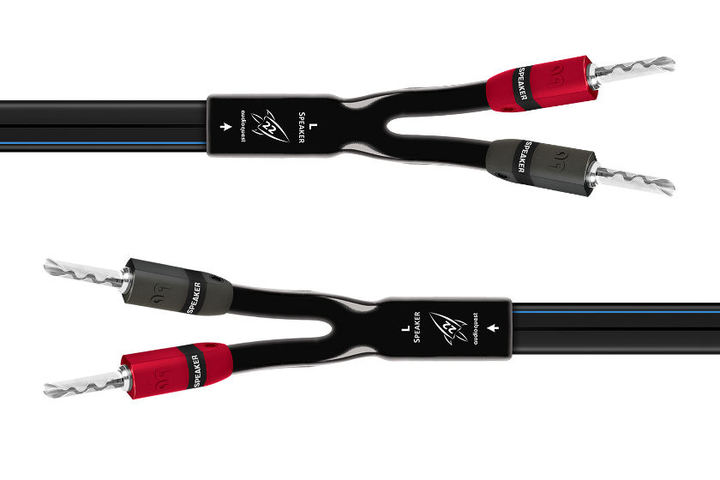
AudioQuest is a tweaker – if AudioQuest can improve a product, or introduce a better tool for your business, that’s what they will do.
Almost 20 years ago, AudioQuest introduced the first models of the Flat Rock Series of speaker cables: Slate, Bedrock, Granite and Gibraltar. Over the next couple of decades these models saw many improvements, and eventually new model names in order to codify those many improvements.
Along the way, dealers asked audioquest to bring the value and effectiveness of cables optimized both for Full-Range and for Single-BiWire to a wider audience — and so AQ designed a series of similar concept models, but smaller and less expensive – using the in-house bridge name “Rockettes” for smaller Rocks. The series name evolved to simply Rocket, and in honor of a very famous Oldsmobile, Rocket 88 became the top model.
Another half-generation later, and AQ heard the drumbeat of dealers asking for speaker cables which would meet the same practical mandate of being optimized both for Full-Range and for Single-BiWire, but at yet lower prices — and which must be easy for the consumer, store or integrator to prepare themselves.
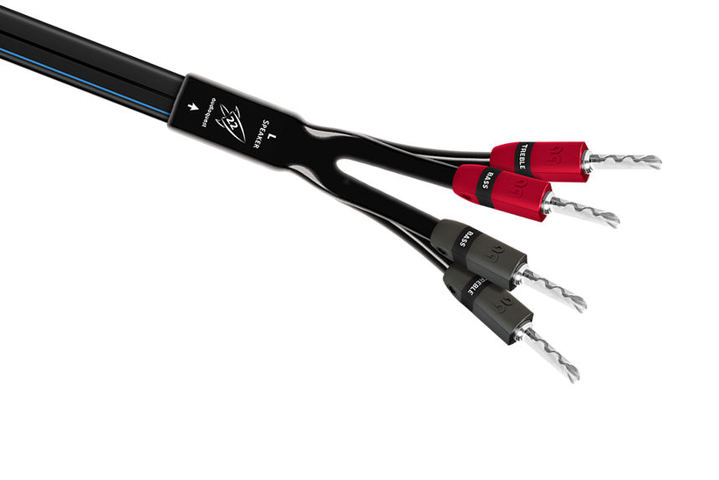
Preparing Rocket 11 and 22 for Full-Range is simple – there is no braid to cut back and dress, no breakouts, no legs or pants – and of course the cables are CL3 and FT4 certified.
Strip the PVC jacket and inner insulation, put the 2 red conductors together, put the 2 black conductors together, insert in the amp’s and speaker’s connectors, and play music. Or, better yet, insert the bare ends into AQ SureGrip 100 Series or 300 Series Banana Plugs or Spade Lugs.
Preparing Rockets 11 and 22 for BiWiring is as quick and easy as for Full-Range – at the “amplifier” end put the two red conductors together and the two black conductors together as with Full-Range (see above ). At the “speaker” end use one red conductor for positive treble, one black conductor for negative treble, one red conductor for positive bass and one black conductor for negative bass.
BiWiring is a tremendous advantage when the speaker allows. A speaker’s crossover includes a high-pass filter sending energy to the tweeter or midrange + tweeter, and a low-pass filter sending energy to the woofer. A BiWirable speaker simply allows separate outside access to the different filter networks.
The big sonic advantage of BiWiring comes from the large magnetic fields associated with the bass not modulating the treble cable. This is akin to taking the waves (bass) out of the water while you (the treble) are trying to swim. The bass isn’t helped by BiWiring, but it sure sounds that way because the bass harmonics and all the treble are significantly less distorted.
The most common reason people don’t take advantage of this obvious audible improvement is the cost of buying twice as many cables – but with properly designed cables, BiWiring using the same or less money will always yield better sound. The story is not about how much money to spend, but about how to get the best sound for the money – though of course confidence in value does lead to higher value sales.
Rockets 11 and 22 use Semi-Solid True-Concentric Conductors for the first time. AQ has been bragging about the tremendous advantages of Concentric conductors for years. In addition to the superior Long-Grain Copper used in G2, X2, Q2 and the SLiP cables, and controlling directionality — the concentric arrangement of the strands is why these cables sound so clearly superior to other seemingly similar cables.
“True-Concentric” is an industry standard term for when each layer of strands in a concentric conductor is spiraled in the opposite direction from the layer below, eliminating the lines of contact between the layers, and increasing contact pressure at the points of contact. The downside is much more machine time and higher cost – the upside is better sound you can hear.
Rocket 11 uses AudioQuest’s long-proven Long-Grain Copper (LGC), while the slightly larger conductors in Rocket 22 use an extremely effective blend of LGC and Perfect-Surface Copper (PSC).
Skin-effect causes the sonic signature of a concentric conductor to be almost entirely the signature of the metal used for the outermost layer. True-Concentric construction significantly furthers this beneficial effect by dramatically increasing layer autonomy.



